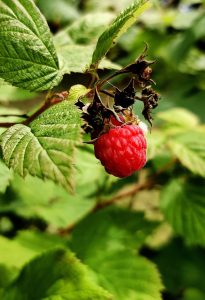 We focus on both diet and exercise for a healthier life and great appearance at RCF in Houston, TX. Fruits and vegetables are an important part of that. Some tasty additions to a healthy diet are berries. Berries are defined as a fruit with a pulpy pericarp that has seeds embedded inside it. You immediately think of grapes, blueberries and currants, but bananas, peppers, eggplant, watermelon, oranges, pumpkins, avocados tomatoes, kiwis and cucumbers also fit that description. Yes, all of these are considered fruits and are berries. Strawberries, black raspberries and raspberries aren’t berries, but we’ll include them in the group of berries.
We focus on both diet and exercise for a healthier life and great appearance at RCF in Houston, TX. Fruits and vegetables are an important part of that. Some tasty additions to a healthy diet are berries. Berries are defined as a fruit with a pulpy pericarp that has seeds embedded inside it. You immediately think of grapes, blueberries and currants, but bananas, peppers, eggplant, watermelon, oranges, pumpkins, avocados tomatoes, kiwis and cucumbers also fit that description. Yes, all of these are considered fruits and are berries. Strawberries, black raspberries and raspberries aren’t berries, but we’ll include them in the group of berries.
Grapes and products made from them, like juice, raisins, vinegar or wine, have health benefits.
When you eat the skin and the seeds of the grapes, you’ll be consuming the potent antioxidant polyphenol, that it contains. They not only help lower blood pressure, but also heart rate. Grapes contain fiber, vitamin C and vitamin K. One study showed that if you ate grapes three times a week, your risk of type 2 diabetes was lowered by 12%. Another study showed that people who consumed 17 ounces of grapes for 8 weeks had lowered blood cholesterol levels and less oxidative stress. However, 17 ounces is about 89 grapes, which is quite a lot. Another study found drinking 12 ounces of Concord grape juice for 12 weeks improved memory.
Cranberries can be beneficial for UTIs—urinary tract infections.
Most people are aware that cranberry juice and cranberries may be beneficial for UTIs and many nursing homes include cranberry juice daily in residents’ diets. The cranberry juice contains substances that prevent the E. coli bacteria from sticking to the urinary tract or bladder wall. Other infectious bacteria, like the H. pylori that causes gastric cancer and stomach ulcers, also succumb to the teflon-like powers of the cranberry that prevents it sticking to the stomach wall. Cranberries contain fiber, vitamin C, manganese and antioxidant polyphenols. They can help keep the arteries more flexible, oxidative stress, lower high cholesterol and blood pressure.
Blueberries are healthy are part of that comes from the color.
Seriously, the substance that makes blueberries blue, anthocyanins, are not only good to reduce oxidative stress, it also helps lower the risk of diabetes, cancer and heart disease. They also help lower bad cholesterol and enhance the artery functioning. They reduce insulin resistance, which is the precursor to type 2 diabetes by as much as 26%. They’re even good for reducing cognitive decline that comes with aging. Blueberries contain fiber, vitamin C, K and manganese.
- Raspberries, the berries that aren’t really berries, are high in vitamin C, K and manganese. They are also high in antioxidants. Black raspberries reduce the risk of heart disease and may reduce inflammation.
- Goji berries are high in vitamin A, C, fiber and iron. The vitamin A and zeaxanthin they contain are beneficial to the eyes. They also contain the antioxidant polyphenols and drinking goji berry juice for 30 days can increase blood antioxidant levels in 30 days.
- Strawberries, another berry that’s not a true berry, has high amounts of fiber, vitamin C and manganese. It can reduce the risk of heart disease, lower inflammation and may help prevent diabetes.
- You might not expect berries to grow on a palm tree, but acai berries do. It has ten times more antioxidants than blueberries. It can reduce insulin amounts, blood sugar and cholesterol levels. It also reduces the symptoms of osteoarthritis.
For more information, contact us today at Reggie C Fitness
